Growing the business is an objective for nearly every owner, but with this comes a sometimes unanticipated consequence—outgrowing the facility’s space, making a move the only logical recourse. Consider American Tent LLC. Currently housed in Green Bay, Wis., the commercial and party tent manufacturer has been operating in a 35,000-square-foot space since opening in 2014, says Tony Ehrbar, owner/CEO.
Initially, its office staff numbered four; now it’s up to 20. Total staff amounted to 12; now it has just over 50.
“We’re pretty cramped in our current space; our production area is about 12,000 square feet so people are on top of each other,” says Ehrbar. “We don’t have a showroom and our office is just one big space—about 4,000 square feet—with small pop-ups.”
Despite Ehrbar’s concerns over potential production interruptions, American Tent will relocate to a nearby vacant mall by the end of 2021, taking over the mall’s interior, now under renovation, and giving the company 125,000 square feet of space, including about 16,000 square feet for the office. It will also have a showroom and a far roomier warehouse.
Michael Lubas, co-owner of Vermont Tent Co., a full-service tent and event rental business in Essex Junction, Vt., moved his business in 2019 for the same reason. At his previous location, five miles from where he is now, he operated out of two warehouses; the main one, with a showroom and office, was 17,000 square feet and the second, five miles away and used for storage, was 10,000 square feet. The company also had a dozen 8-by-40-foot storage containers.
“We’d been out of space for years, even after adding the second warehouse and containers,” says Lubas. “Now we have one 60,000-square-foot location, no storage containers and all the employees under one roof, which is huge.”
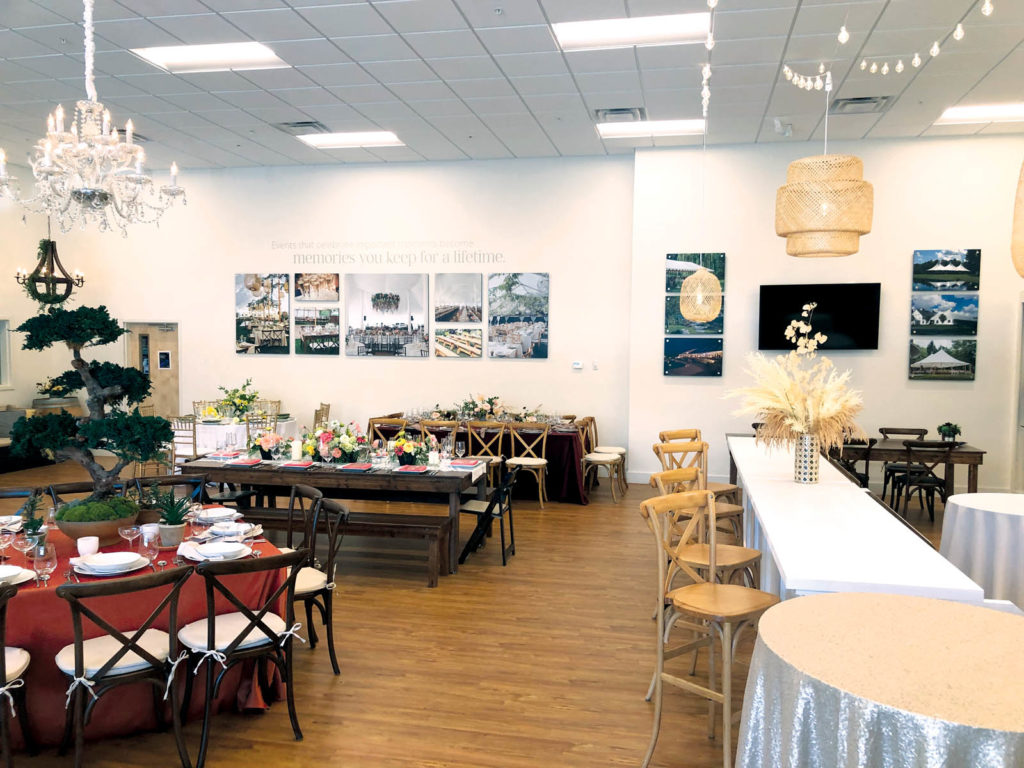
Stepping back, deciding
More room is a primary motivator for most, but there are other reasons to pick up shop. For Dan Hooks, president of Party Reflections Inc., a five-location, special event rental production company headquartered in Charlotte, N.C., moving has been “a necessary evil” for the company during its more than 63 years of operation.
In January 2020, it moved from a 22,000-square-foot building in Greensboro to one about a mile away that is 40,000 square feet. In late February 2020, it moved the Charlotte operation from a 115,000-square-foot facility on 6.5 acres to one that is 185,000 square feet situated on 15 acres. Although in both cases space had become an issue, one of Hooks’ main objectives was better positioning the team for success.
“When you start making adjustments to your operations because of the facility you’re in, you must step back and decide where to invest your money,” he explains. “We believe the proper facility will give the company the best opportunity to succeed in the future. We’re always looking for ways to improve the operation, and that includes a larger, better facility.”
Hooks had some concerns about the Charlotte relocation. Although this operation had moved five times over the last 50 years, all had been within a two-mile radius. The new location was 10 miles away. Hooks worried that some employees—and some customers—might not follow. This proved unfounded.
“We discussed the potential move with key employees and waited for feedback from the rest of the team,” he recalls. “There were no major objections and we felt it might even make it easier for some employees, and also easier to find potential new employees in the area we were moving to.”
As for customers, since the company delivers about 80 percent of the equipment, there wasn’t much difference for them. The biggest impact was on the delivery teams, since they were now leaving from a more heavily trafficked area in the early morning, potentially affecting route efficiencies—something Hooks says hasn’t yet created any “notable issues.”
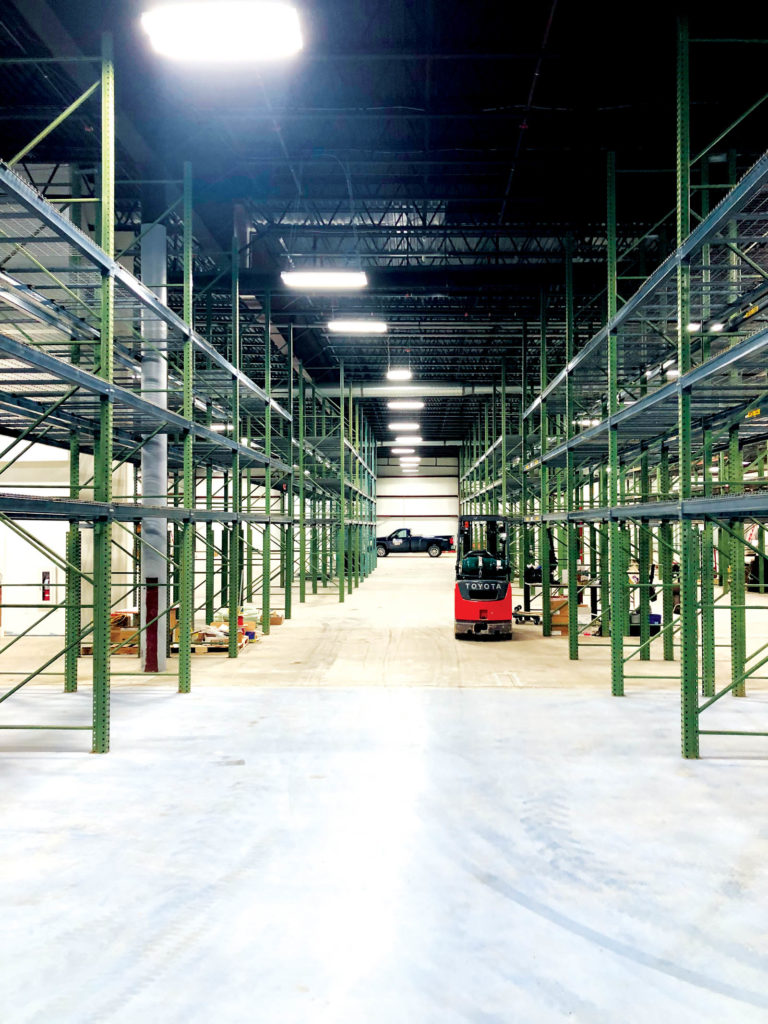
Chip Breitweiser, president and owner of Industrial Shadeports Inc., a Fort Lauderdale, Fla., manufacturer of commercial shade, membrane and tensile structures, says he could “write a book” about concerns related to his company’s move.
“I would probably start chapter one with the full-on terror of disrupting a nice, profitable business and turning it into a seven-headed, cash-sucking monster with a long-term lease strangling me,” he says.
Then there were the strategic issues, such as keeping the business running during the move, cash flow, staffing up to meet the anticipated expanded business volume, if employees and customers would follow, where new orders would come from, logistical concerns, legal worries … all the stuff sleepless nights are made of.
“The secret for me was to go all in once we made the decision,” Breitweiser says. “Not everyone completely embraced the vision, so I had to be the head cheerleader and push it through, especially when we realized we couldn’t find an ideal location without moving [far] away. We ended up here because it was the only place giving us the space to continue our growth without having to move farther away from where our employees live.”
Compounding the angst was a real estate market that made buying prohibitive, requiring the company to rent instead. Even more unnerving was that the move from its 3,700-square-foot location in Pompano Beach to the current 11,000-square-foot building happened in February 2020, two weeks before COVID-19 hit the headlines and four weeks before closure mandates. Regaining their composure, company leaders gathered the team, decided to keep working through the pandemic on backlogged orders, increased their sales and marketing efforts—their monthly rent was four times what it was previously—maintaining production and their financials.
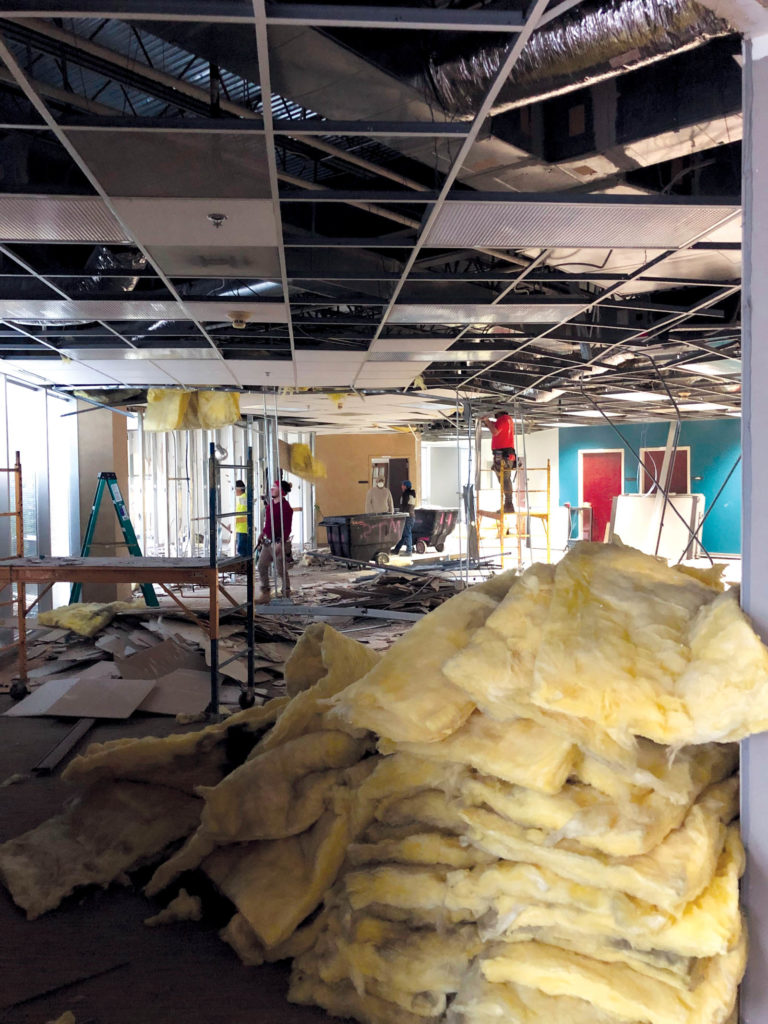
Just doing it
Deciding to move is the first step. The next is finding the right space. Ehrbar started exploring options toward the end of last year/beginning of this, a six-month hunt in total. He looked at several manufacturing spaces, liking one especially, but pricing put it out of reach, hence the decision to take over the mall.
Lubas started planning his move about 15 months ahead. He also wanted to purchase, but wound up renting a space instead, one requiring a full renovation since it had previously housed a go-kart track and roller-skating rink. The first thing the three co-owners tackled was configuring their dishwashing operation and full-service laundry. Next, they designed the showroom, office and inventory spaces. During the move, they remained operational, although the computer system was down for a day and a half.
Breitweiser also kept production going through Shadeports’ month-long move, although at a slower pace. Staff members started by getting rid of what they no longer needed, hauling off about eight tons of old fabric, steel, broken tools and other detritus.
“The new place wasn’t ready for us and we had to move, so we just started moving,” he recalls. “Moving the equipment and inventory was done over two weekends. We kept equipment running at the old place until the last minute and were able to install one welding outlet in the new place so we could at least keep going. All the staff was involved in the move. We only contracted out the office furniture and files.”
The move and added space have brought the company opportunities, Breitweiser says, allowing it to add staff, equipment and capacity. Even though it moved just four miles away from the old location, it put them into a different labor pool, affording a wider variety of candidates.
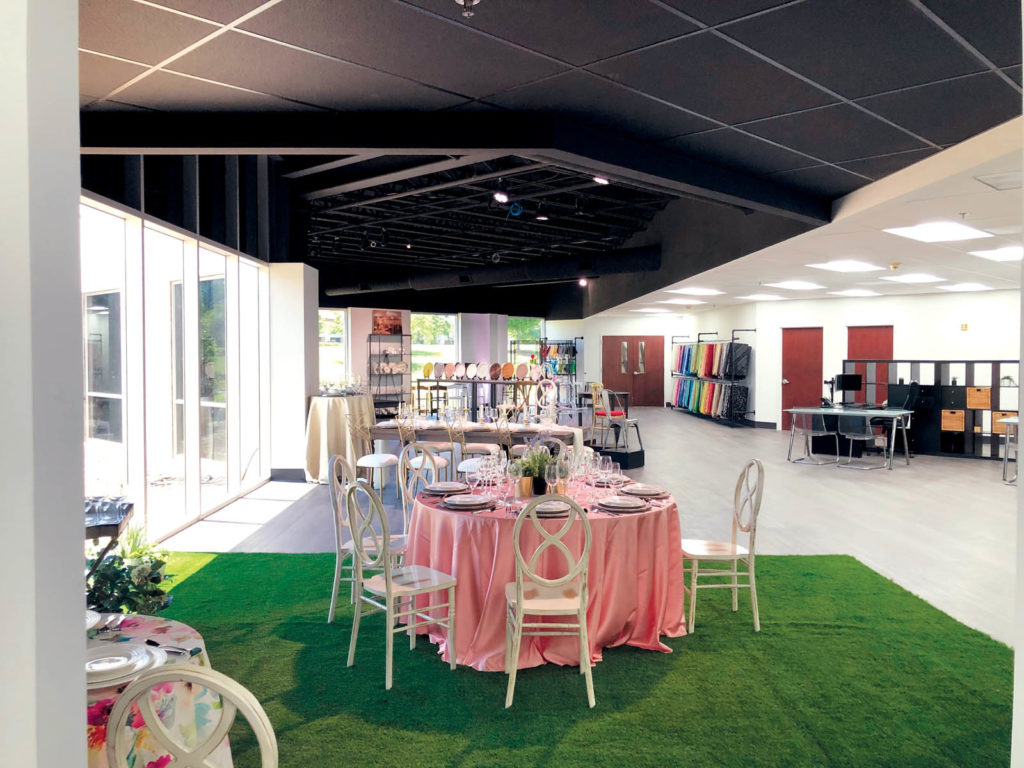
Hooks faced two different scenarios with Party Reflections. The new Greensboro site was move-in ready, with the exception of the showroom, some minor plumbing and electrical upgrades. That relocation took around two months. The staff was smaller and they were bringing in items from three buildings (the original one and two from a company Hooks acquired). The dishwashing and laundry hookups were fairly easy, so these were only down for about a week. However, the Charlotte operation—which required about three months of demolition and reconstruction—was another story.
Originally, the plan was to deliver product out of the existing building, picking it up and returning it to the new one—a tactic that had worked well in previous moves. However, COVID “obliterated” this plan, says Hooks. With 75 percent of the staff laid off or working from home and no jobs on the books, the company changed course and immediately began moving, says Hooks.
“We scrambled to find companies that would come help move the equipment and get it back up for when the industry started up again,” he says, adding that setup was completed in under a few weeks. “Who knew this would be over a year?”
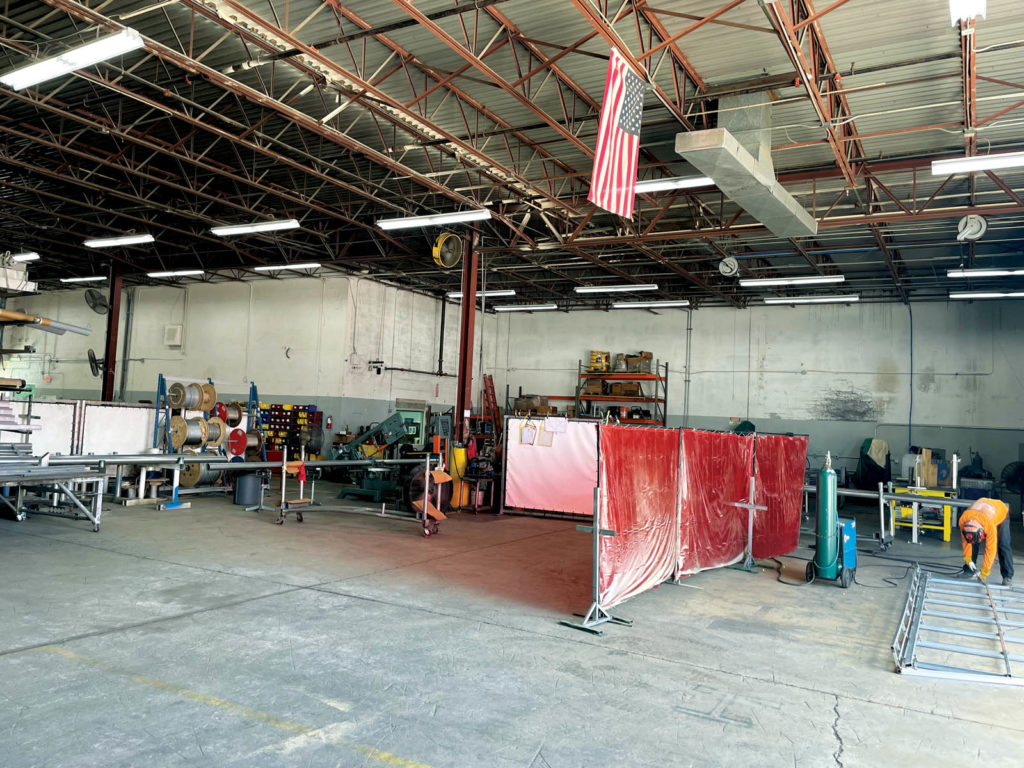
Because the showroom and office areas were going to take the longest to complete, the intention was to operate sales out of the existing building until the renovation was finished. Hooks also didn’t want to move the servers until the new space was ready. Instead, the company decided to move the offices as fast as possible so employees could return to the new building. Once the servers were relocated, the Charlotte site was fully operational by the end of March. The showroom and sales offices were completed by the end of April, with the sales team back in the showroom by May 2020.
Adding to the need for speed was the desire to reduce costs; paying for both buildings while no work was coming in wasn’t ideal, says Hooks. The Charlotte team members managed the move, wrangling almost all the equipment and racking, allowing them to vacate the old building within a few months. (Making things easier was purchasing new racking for 85 percent of the new space, enabling them to bring inventory over with a “home” already waiting, says Hooks.)
Both relocations have created production efficiencies and provided growth opportunities, says Hooks. But there have been other advantages.
“It immediately equalizes the playing field again in your operations departments,” he explains. “You leave the ‘ghosts’ of mistakes past in the old building and no one has ‘their space’ again for a while. Everyone is uprooted and begins the process of finding their comfort zone all over again. It’s new to everyone and cooperation is increased to get the flow going again.”
Pamela Mills-Senn is a writer based in Seal Beach, Calif.
SIDEBAR: Encouraging buy-in
Moving isn’t just stressful for business owners, it’s also hard on employees, who are often upset at having their routines disrupted. Yet their buy-in is critical for a successful relocation. To lessen the angst, Dan Hooks, president of Party Reflections Inc., Charlotte, N.C., advises the following:
- When you know you’re ready to move, involve as many people as you feel comfortable with doing.
- Survey frontline employees when it comes to space needs. Listen to them.
- Get department heads on board by encouraging them to envision what their department could look and run like in the new space. “Challenge them to create the optimum space and see if you will have room to provide it,” he says.
- But decide on the building first. “Too many opinions on every building you look at can extend the purchasing window too far sometimes,” Hooks explains. “Utilize a small committee to locate the best building from those being considered and let the employees build it from there.”

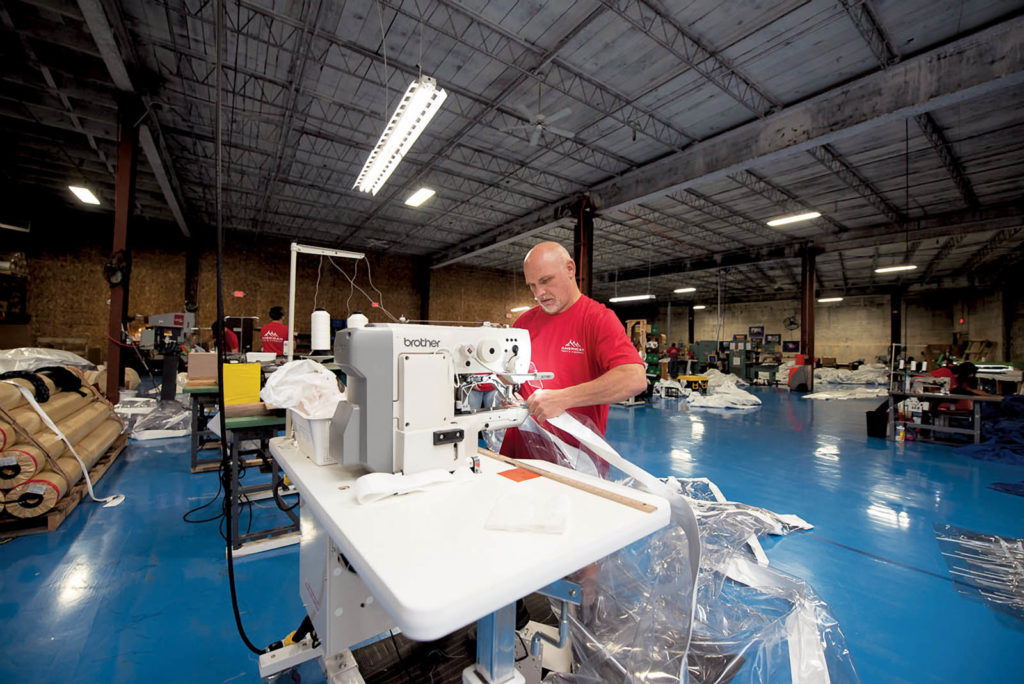
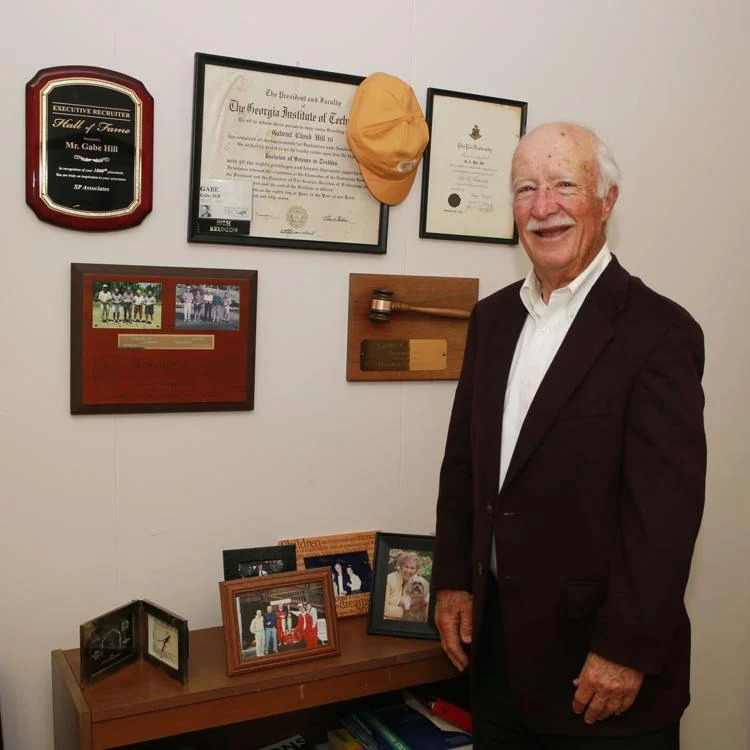
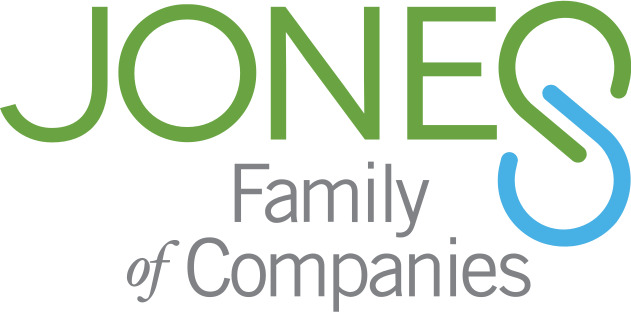




Leave A Comment